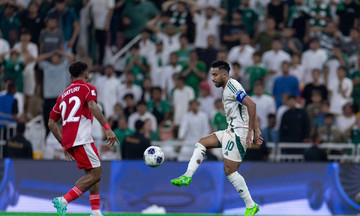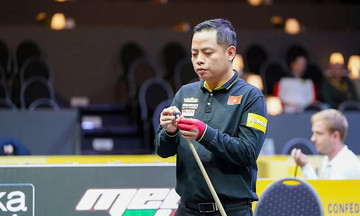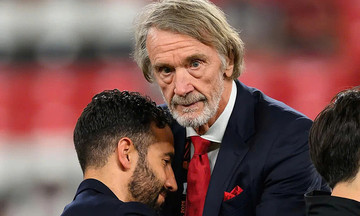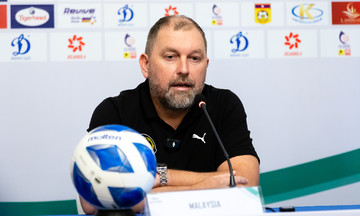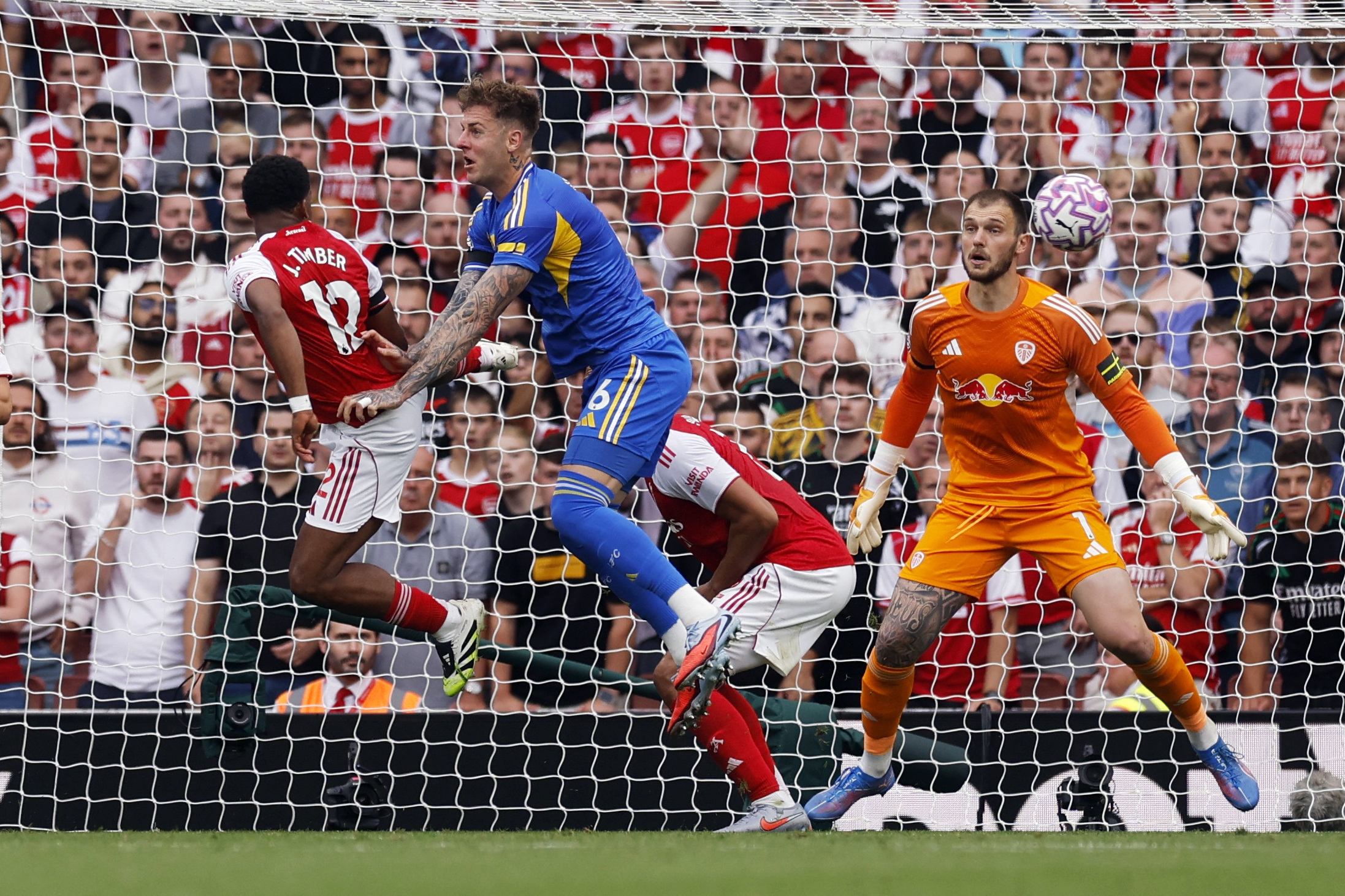 |
Jurrien Timber rises to head in the opening goal in Arsenal's 5-0 Premier League victory over Leeds United at the Emirates Stadium, London, on 23/8/2025. *Image: Reuters* |
Last season, Arsenal led the Premier League with 14 goals from corners. This season, they've already netted three from similar situations in just two games: one against Man Utd and two against Leeds Utd.
Both corner goals in yesterday's 5-0 win over Leeds, scored by right-back Jurrien Timber in the 34th and 56th minutes, employed tactics honed last season.
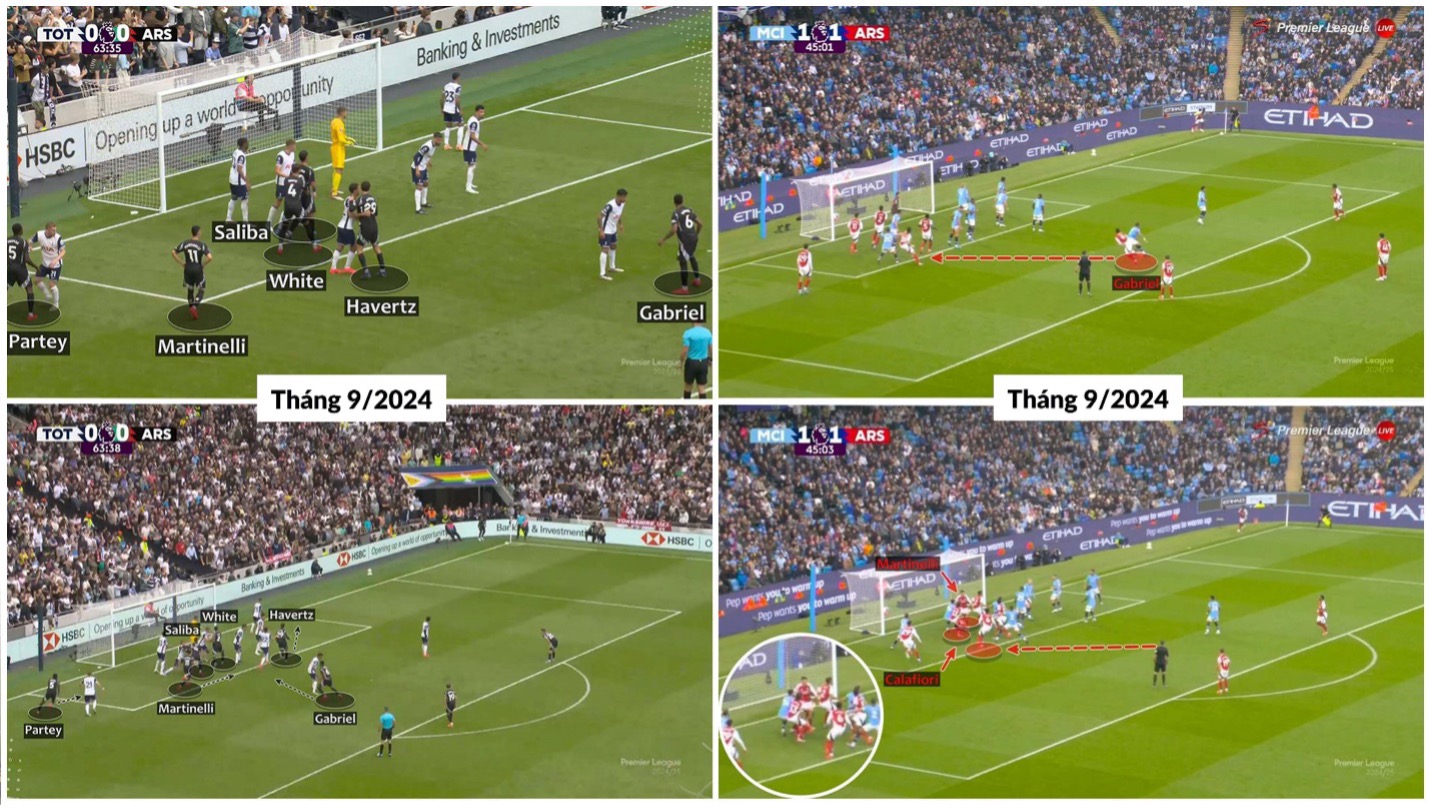 |
Arsenal's common corner kick strategy during the 2024-2025 season. *Image: Hoang Thong* |
In 2023-2024, Arsenal primarily used a corner routine with 5-6 players starting near the far post before cutting across the face of the goal towards the near post. In 2024-2025, they refined this by positioning one player at the penalty spot. This allows for both a player running from the far post to the near post and another attacking directly from the penalty spot.
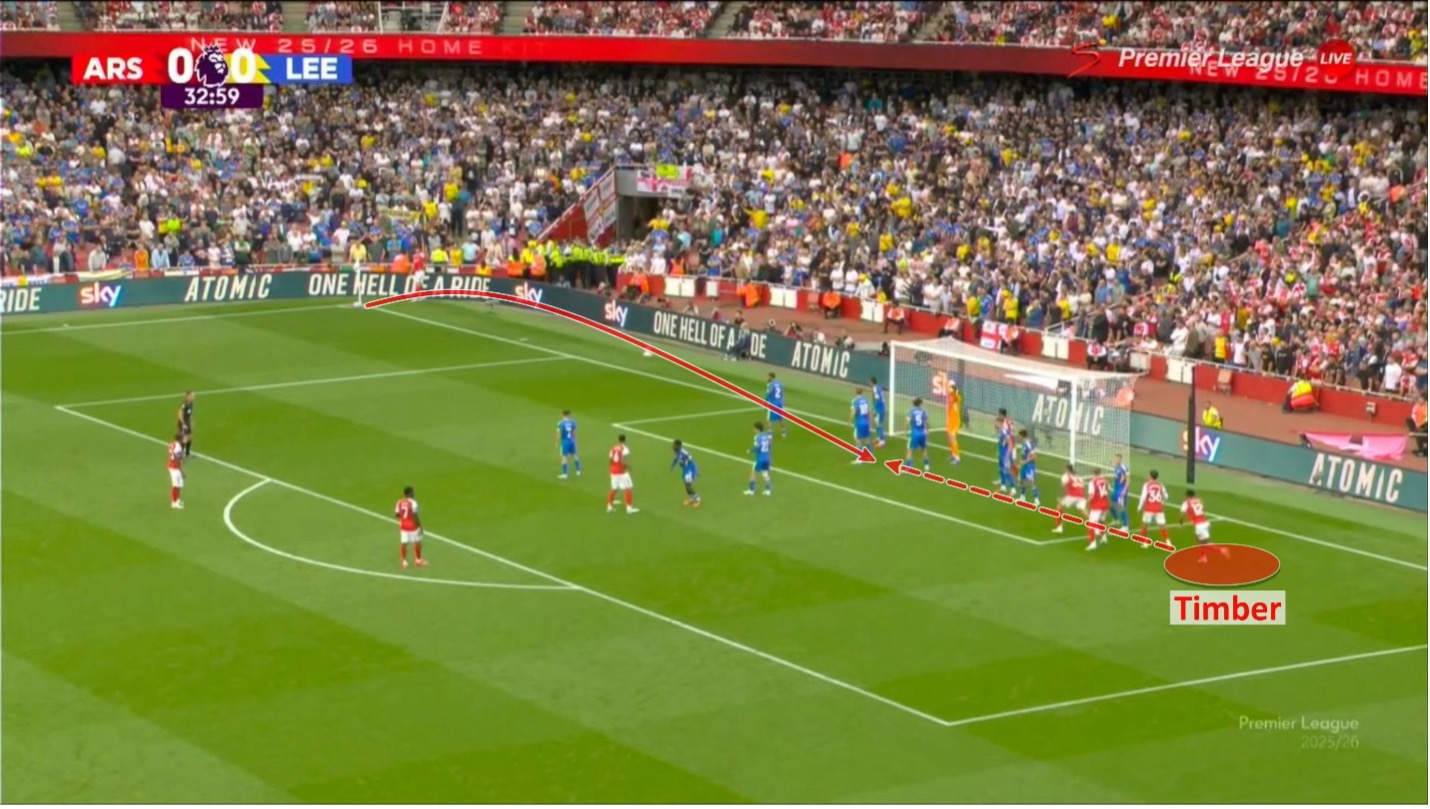 |
The corner kick strategy that led to Arsenal's opening goal against Leeds. *Image: Hoang Thong* |
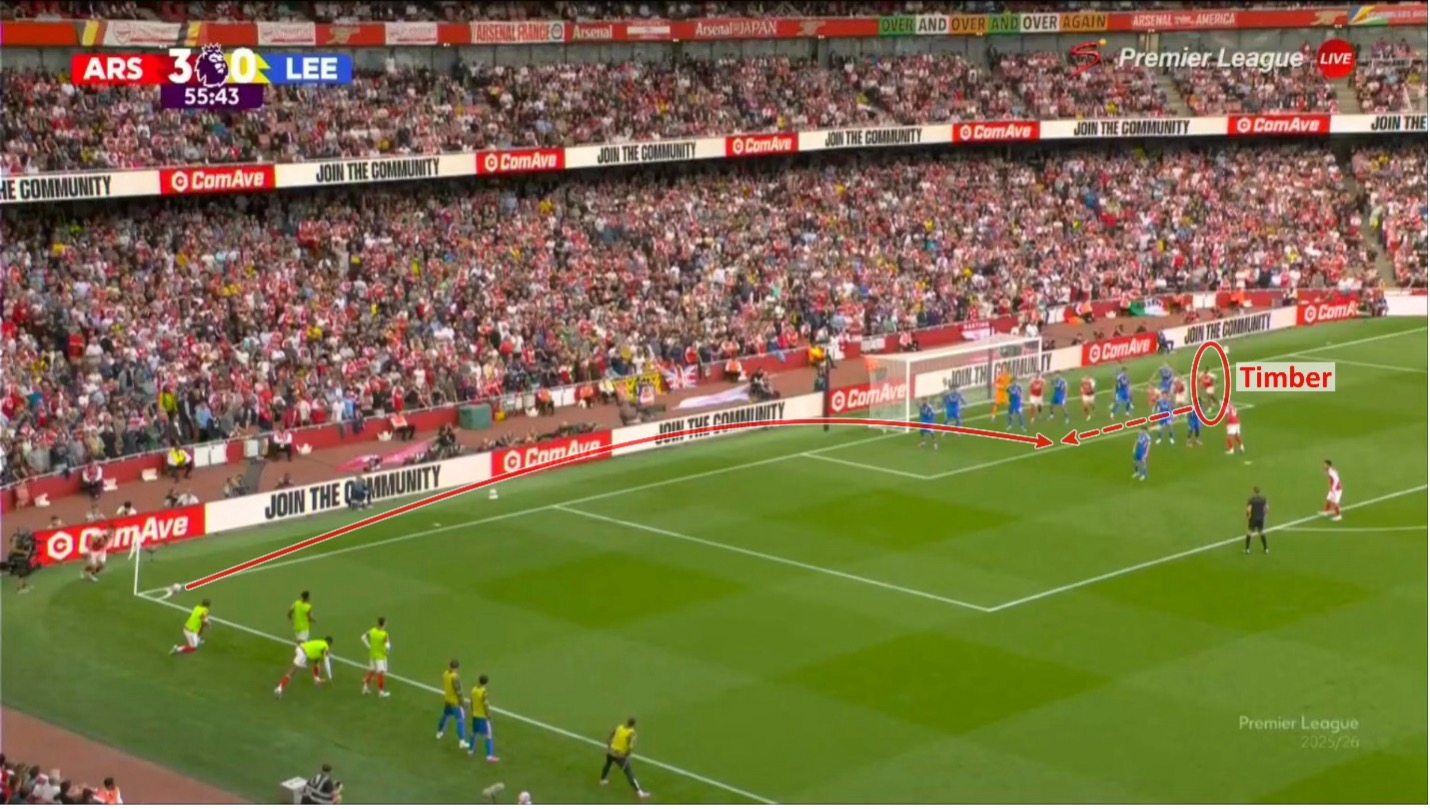 |
The corner kick strategy that led to Arsenal's fourth goal against Leeds. *Image: Hoang Thong* |
This strategy, previously used to score against Tottenham and Man City last season, once again proved effective against Leeds at the Emirates. In both goals, Timber started furthest wide in the group of five attackers near the far post. He then made a run across the face of the goal, arriving in the center of the box to meet Declan Rice's precise deliveries.
Unlike the Leeds game, the corner goal that secured victory in the opening match against Man Utd showcased a new tactic, tested during pre-season against Tottenham.
At Old Trafford, Arsenal's new setup involved five players at the edge of the box, two near the penalty spot, and two near the far post. Left-back Ruccardo Calafiori, starting furthest wide near the far post, scored the decisive goal.
 |
The corner kick strategy that led to Arsenal's victory against Man Utd. |
Sun Tzu's *Art of War* emphasizes occupying advantageous positions to control the terrain and ensure victory. Favorable positioning provides control and initiative in combat. Tactics, like water, adapt to the situation, exploiting opportunities and advantageous positions to strike at weaknesses while avoiding heavily defended strengths.
Whether Mikel Arteta has studied Sun Tzu is unknown, but his team clearly excels at controlling the "terrain"—choosing advantageous positions—during set-piece attacks.
The common thread in Arsenal's corner routines over the past three seasons is the starting positions of the attacking players. Whether starting near the far post, the edge of the box, or the penalty spot, these positions are difficult for defenders to control or access.
Starting near the far post creates blind spots for defenders. Starting at the penalty spot or the edge of the box limits the defenders' field of vision.
These starting positions give Arsenal an attacking advantage from concealed angles—behind or beside the defenders. Arteta's attackers can see both the incoming corner and the opposing defenders. As the ball arrives, they can quickly identify unmarked teammates or open spaces to exploit.
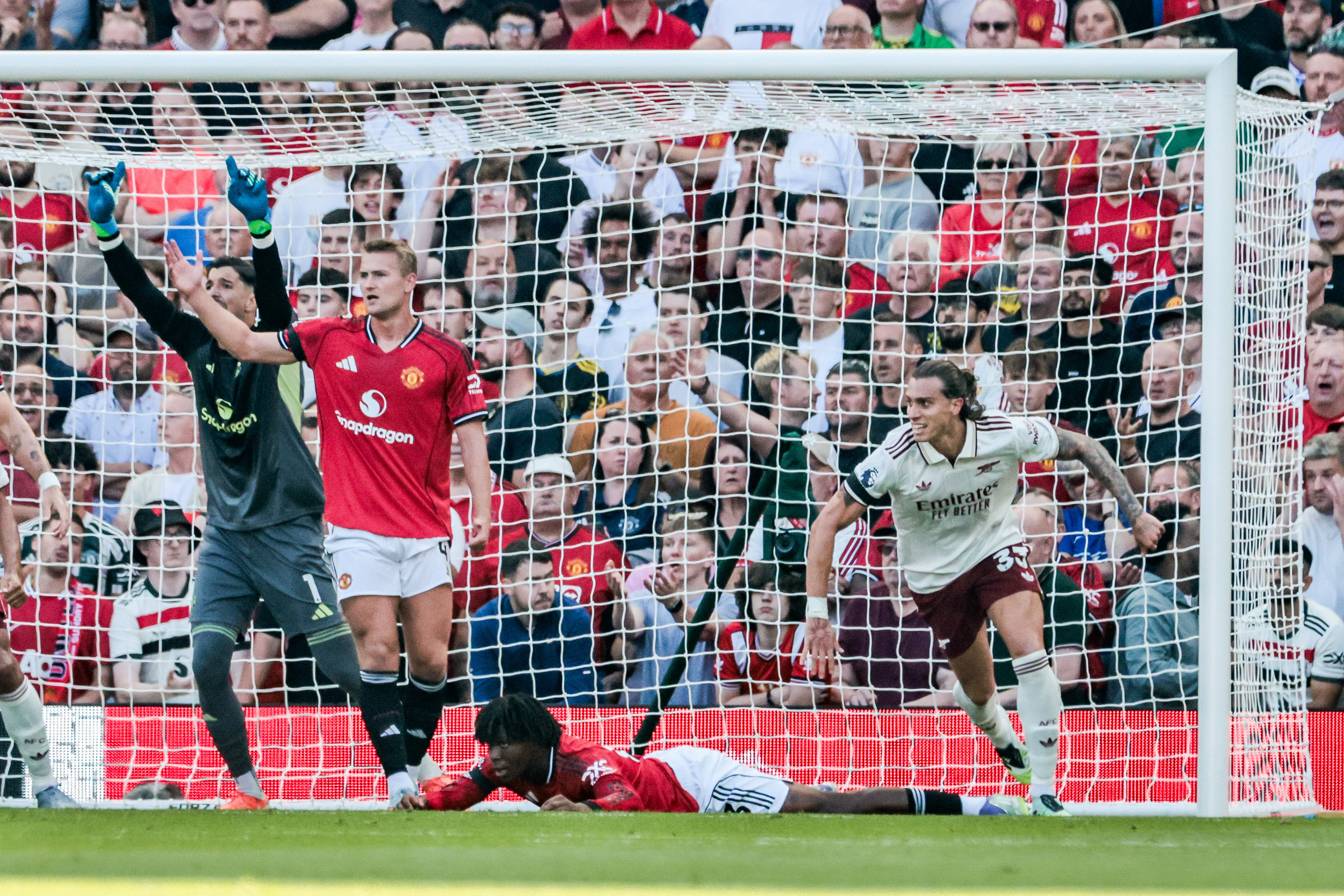 |
Riccardo Calafiori celebrates his goal against Man Utd in the first round of the Premier League at Old Trafford, Manchester, on 17/8/2025. *Image: Reuters* |
In set-piece attacks, the accuracy and consistency of the corner taker are crucial. Even the best-organized attack can fail if the delivery is off target.
Arsenal's corner kicks consistently feature inswinging deliveries, whether from the left or right corner. Bukayo Saka usually takes right-sided corners, while Declan Rice typically handles the left.
Delivery quality is non-negotiable; it must be precise and consistent for effectiveness. While personnel positioning within the box is more flexible, aiming to create advantageous attacking angles.
Attacking angles and defensive positioning are intertwined. The defenders' positions and stance form the "terrain," while the attacking team seeks to exploit this terrain through their attacking angles. These elements are key to both exploitation and adaptation in set-piece routines.
As set-piece coach Andy Parslow, formerly of Wimbledon and Swansea, noted on Sky Sports in 2023: "Changing the angle of attack in set pieces presents new problems for opponents. Teams prepare their set-piece defense based on where the ball is placed. They practice for that scenario. But when you shift the angle of attack, you change their thinking, raising questions in their minds: 'What do I do now?' Of course, you can't always achieve what you want in set pieces, but the mindset is to constantly evolve and become unpredictable."
This is precisely what Arteta's Arsenal is doing in their Premier League campaign. While set pieces and corners may appear rigid, their approach to thinking about, applying, and constantly refining them is as fluid as water.
Hoang Thong




